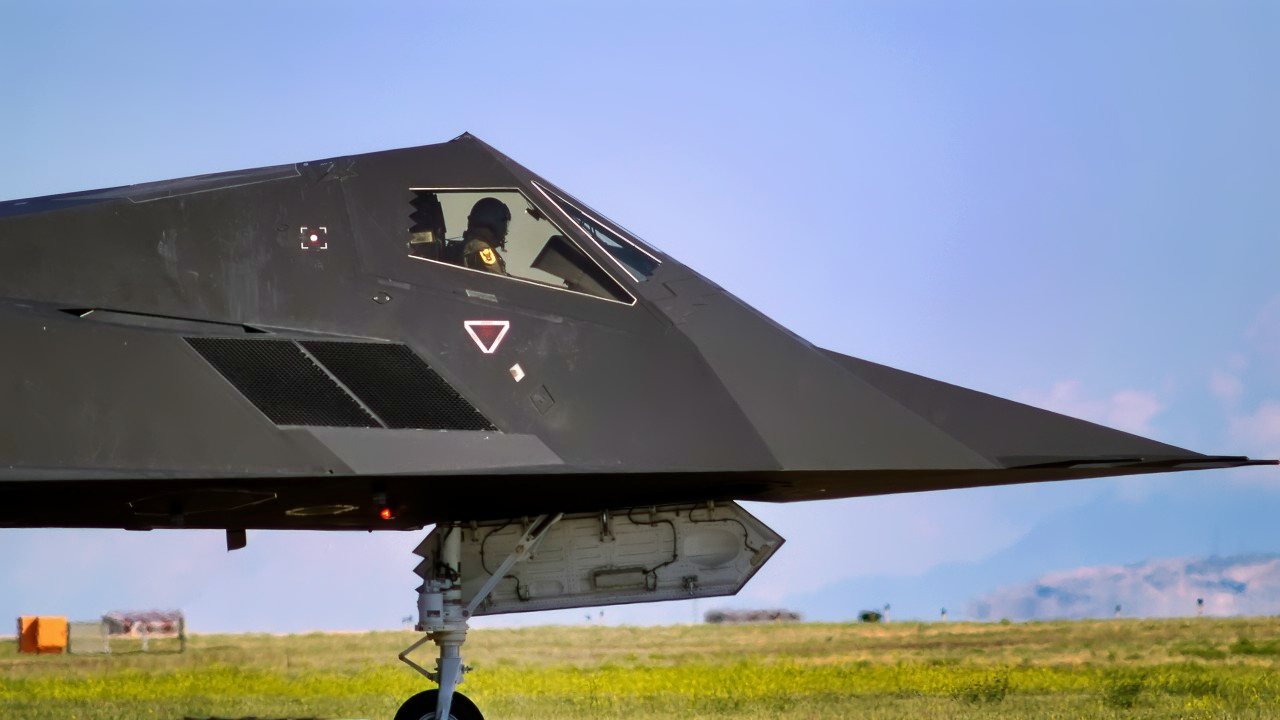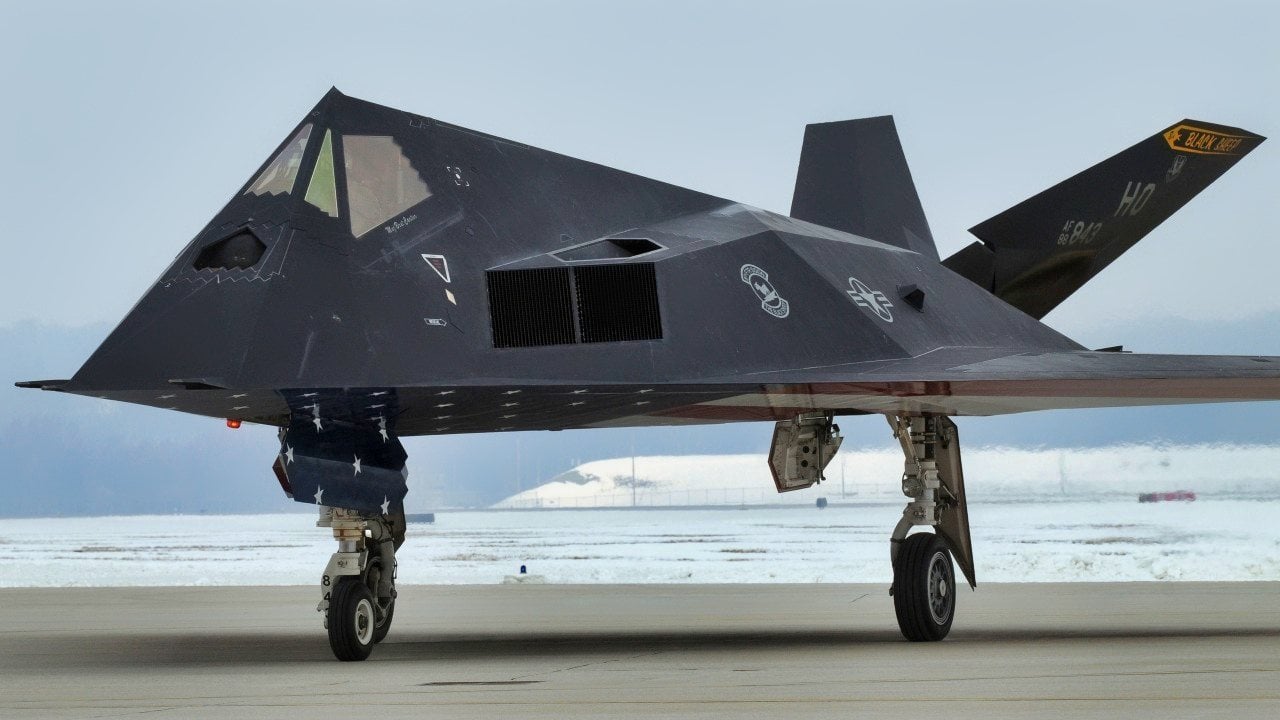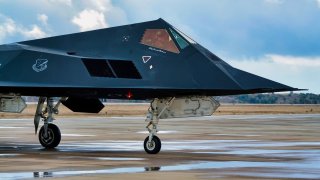F-117 Nighthawk Stealth Fighter Flying from Aircraft Carriers? It Could Have Happened
The F-117 Nighthawk, a pioneering stealth aircraft revealed in 1988, was initially proposed to the U.S. Navy as the F-117N "Seahawk." It would have flown off aircraft carriers.
Summary: The F-117 Nighthawk, a pioneering stealth aircraft revealed in 1988, was initially proposed to the U.S. Navy as the F-117N "Seahawk." It would have flown off aircraft carriers.

Key Points:
-Despite Lockheed's efforts to modify the F-117 for naval use, including enhancing its speed and payload capacity, the Navy rejected the proposal due to cost, performance priorities, and inherent design limitations.
-The Navy opted to invest in more suitable fourth-generation fighters and eventually joined the F-35 Joint Strike Program, avoiding potential pitfalls of the F-117N.
The Navy's Rejected F-117N Seahawk: A Stealth Fighter That Never Took Flight
The F-117 Nighthawk was a technological marvel when it was first revealed to the public in 1988 (mind you, this bird had been kicking around the classified world since at least 1981). A black, triangular plane with no external weapons, it was a truly revolutionary bird.
In fact, the entire stealth program catapulted military aviation into the next century, thanks largely to the way that the Defense Advanced Research Projects Agency (DARPA) employed computer software to analyze the way electromagnetic waves impacted certain aircraft designs and materials. Interestingly, even though the F-117 was next-level air dominance technology, only the Air Force was interested in it.
America’s other two military services that use fixed-wing aircraft, the United States Navy and the United States Marine Corps, were not interested in acquiring an F-117. The U.S. Navy, despite the tireless efforts of the developers of the F-117 Nighthawk at Lockheed Martin to convince the Navy that it needed these planes, refused to purchase 255 units (for $70 million a pop) of Lockheed’s proposed F-117N “Seahawk.”
Of course, those are just the pitch numbers.
Had the Navy gone through with the purchase, I’m willing to wager my next month’s salary that there’d have been severe cost overruns, unsatisfactory delays, and the order would have like been reduced from 255 units to something much. It’s the plight of military acquisitions.
Lockheed Wanted to Sell the Navy Its F-117
Lockheed attempted to sell the Navy on the F-117N in the mid-1990s, when the Soviet threat had evaporated, and the Cold War had ended. Because of this, the U.S. military was going through what the Clinton administration referred to as the “peace dividend.” The government continued investing into advanced technologies and platforms, but it occurred at a far more glacial pace and suffered through budgetary constraints.
While the Navy was interested in acquiring stealth technology for its new warplanes, it neither had the funding to afford both its crop of F/A-18s nor did it want to place stealth ahead of speed and performance in its carrier-based fighters.
So, while the eggheads at Lockheed really did their best to appeal to the Navy planners, they just couldn’t convince them.
The engineers at Lockheed took the F-117 Nighthawk design and made it Navy-friendly. Heeding the Navy’s need for speed, the boys in the white coats at Lockheed jettisoned the engine that had been installed on the Air Force’s F-117 and instead installed the F414 engine that would ultimately be used to power the speedy Super Hornets, as Alex Hollings reported in 2021.
Under normal flight operations, the General Electric F414 after-burning turbofan engines produced 13,000 pounds of thrust each (26,000 pounds total). With the afterburners kicked on, though, these puppies could blast the F-117N with a combined 44,000 pounds of thrust (22,000 pounds from each engine).
In other words, the proposed F-117N would have made the Air Force’s F-117 Nighthawk look like it was standing still if the two ever flew side-by-side at top speed.
Hubba-hubba.
Lockheed also gave the F-117N a larger weapons bay than what the Air Force’s version possessed. Not only would the Navy’s version have the classic bomber role, but the presence of air-to-air missiles would make the F-117N a true multirole fighter.
What’s more, by employing a “bulging bomb bay door” as opposed to the doors that were on the F-117 Nighthawk, the F-117N “Seahawk” would have been able to carry up to 10,000 pounds of payload into battle. The Air Force’s version could carry only 2,000 pounds.
It Wasn’t Meant to Be
Ultimately, the Navy would not budge on its opposition to the F-117N. It wasn’t only cost. Or the fact that the Navy prioritized speed and performance over anything else for its carrier-based fighters. The fact of the matter was that the F-117’s basic design—a flying diamond, or delta shape—inherently reduced the warplane’s speed and performance.
The original F-117 was built to place stealth above all else. The F-117 Nighthawk accomplished this task and flew into the annals of air warfare because of the fact it did stealth so well.
The F-117N, however, would never be able to achieve its multirole mission for the Navy because it would never perform as well as the Navy’s other multi-role fighters in an aerial combat fashion precisely because of the inherent limitations of the F-117’s basic design.

Further, the fact that the final proposed design for the F-117N had external hardpoints to give the F-117N that additional 8,000 pounds of payload capacity, meant that the stealthy features of the F-117 would have been negated. Thus, the entire point of the plane would have been lost.
A naval version of the F-117 Nighthawk would have performed poorly as an air superiority warplane. What’s more, because of all the modifications needed, the F-117N would have failed at its original mission of providing a deep-strike stealth capability to the U.S. military. The Navy likely dodged a bullet by holding off with the potential purchase of the F-117N. Instead, it acquired more fourth-generation warplanes for its carriers—which were far better suited to the kind of missions that the Navy performs—and it was ultimately able to participate in the F-35 Joint Strike Program.

About the Author
Brandon J. Weichert, a National Interest national security analyst, is a former Congressional staffer and geopolitical analyst who is a contributor at The Washington Times, the Asia Times, and The-Pipeline. He is the author of Winning Space: How America Remains a Superpower, Biohacked: China’s Race to Control Life, and The Shadow War: Iran’s Quest for Supremacy. His next book, A Disaster of Our Own Making: How the West Lost Ukraine, is due October 22 from Encounter Books. Weichert can be followed via Twitter @WeTheBrandon.


